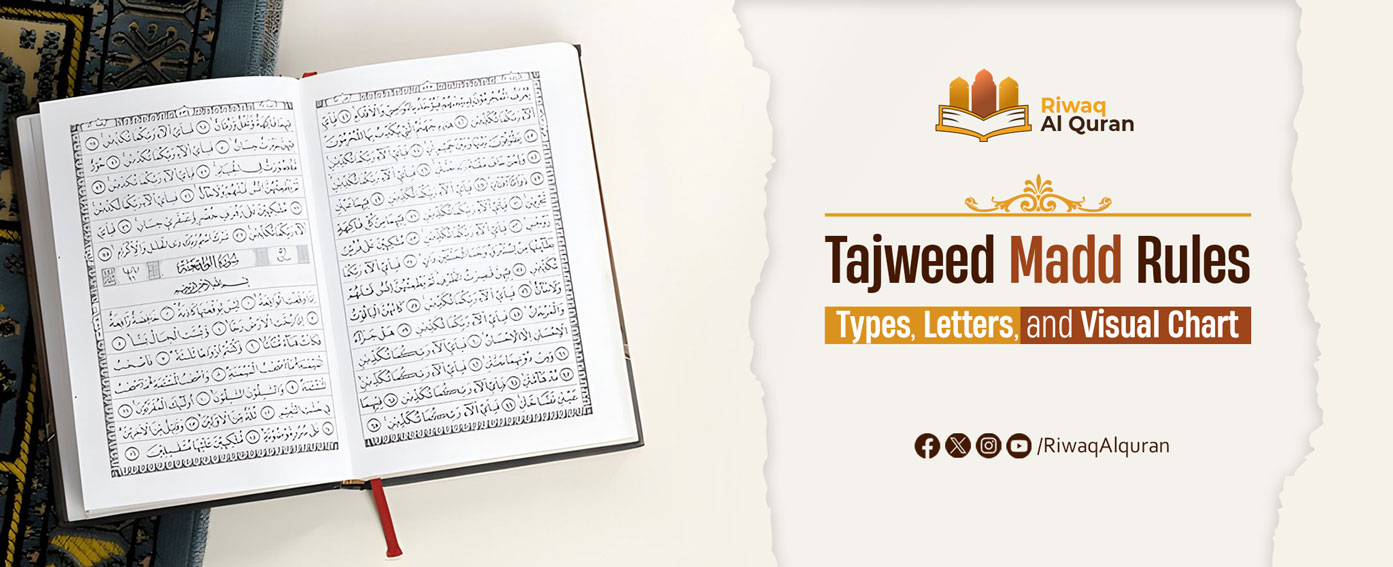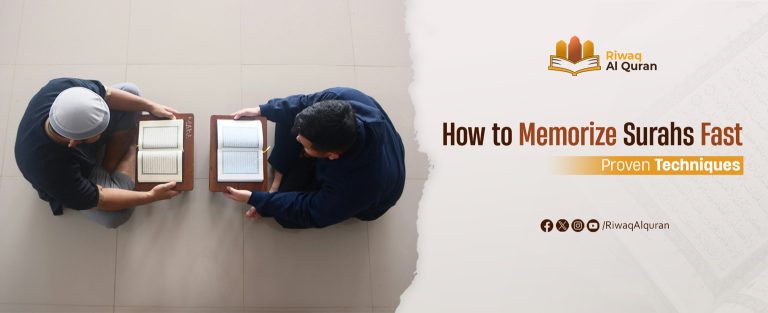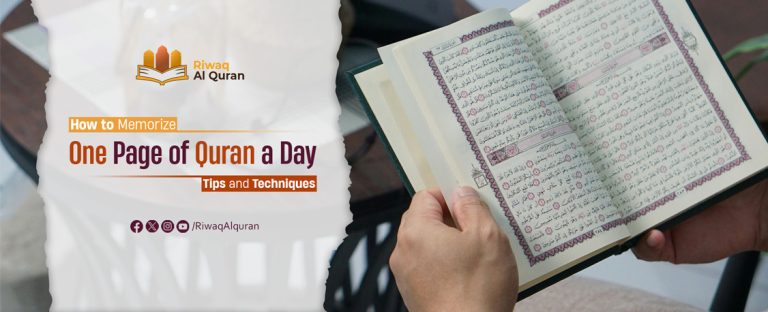Allah SWT sent down the Holy Quran as an ideal source of legislation for mankind to live a great life. Due to its extreme importance, we must read and recite the Quran in a correct and clear way to avoid all sorts of confusion or misconception.
For this, it is necessary for us to follow Tajweed rules for better recitation, which include the kinds of Madd. So, if you have any questions in your head, like what is Madd Muttasil in Arabic, continue reading this post! We’ll start by covering the different types of Madd in Tajweed before discussing Madd Muttasil in detail.
Table of Contents
Types of Madd
There are a number of types of Madd in Arabic. For example:
- Al Madd ut Tabee’ee or Normal Extension.
- Al Madd ul Lazim or Mandatory.
- Al Madd ul Mutassil or Connected.
- Al Madd ul Munfasil or Disconnected.
- Madd us Silah or Joining.
- Al Madd ul Aarid Lissukoon or Contingent upon Sukoon.
- Madd ul Badal.
- Madd ul Iawd… etc.
The type of Madd we are going to cover in the coming section is Madd Muttasil.
What is Madd Muttasil in Arabic?
Mad Wajib Muttasil (مد المتصل) is a kind of Madd Al-Far’ee. It occurs when a Hamza appears after the letter of Madd (that is started with the right vowel) in the same word.
When this appears, the reciter is bound to elongate the Madd for 4/5 Harakat in Hafs (equivalent to the time it takes four or five fingers to open up from an enclosed fist one by one).
The meaning of the word Muttasil is connected, and thus, this can be seen as the Hamza is connected to the letter of Madd in a single word, not two different words just like Madd Munfasil.
Difference between Madd Munfasil and Muttasil

Madd Munfasil (مد المنفصل) is also a kind of Madd Al-Far’ee, like Madd Muttasil. This is defined as an individual Madd since one of the letters of Madd and Hamza (the reason of Madd) comes in two successive words. This appears when the letter Madd occurs at the end of one word, and the Hamza appears at the start of the next word.
Considering this case, the reciter can elongate up to four alif amounts. Now, it is hoped that you understand the difference between Madd Munfasil and Muttasil. For a better explanation, it is good to take a look at some examples from the Quran. Some Madd Munfasil examples are as follows:
- (Al-Kawthar: 1) إِنَّا أَعْطَيْنَاكَ) الْكَوْثَرَ)
- (Al-Kafirun: 1) قُلْ (يَا أَيُّهَا) الْكَافِرُونَ
- (Al-Baqarah: 54) … فَتُوبُوا إِلَىٰ) بَارِئِكُمْ) …
Check this link for more Tajweed rules with easy explanations. We have covered the rules of Noon Sakinah and Tanween, Qalqalah sound, Laam Shamsiya and Laam Qamariya, and other useful topics.
Examples of Madd Muttasil in the Quran
Madd mutassil can be found on various places in the Quran. Some of the examples are given below:
- (Al-Baqarah: 31) وَعَلَّمَ ءَادَمَ (ٱلْأَسْمَآءَ) كُلَّهَا ثُمَّ عَرَضَهُمْ عَلَى (ٱلْمَلَـٰٓئِكَةِ) فَقَالَ أَنۢبِـُٔونِى (بِأَسْمَآءِ) (هَـٰٓؤُلَآءِ) إِن كُنتُمْ صَـٰدِقِينَ
- (Israa: 7) …فَإِذَا (جَاءَ) وَعْدُ الْآخِرَةِ (لِيَسُوءُوا) وُجُوهَكُمْ…
- (An-Nisa: 4) (فَإِن طِبْنَ لَكُمْ عَن شَيْءٍ مِّنْهُ نَفْسًا فَكُلُوهُ (هَنِيئًا) (مَّرِيئًا…

Experience Riwaq Al Quran Classes
Watch real moments from our live sessions at Riwaq Al Quran and see how we bring learning to life. These clips highlight our interactive, student-focused approach designed to keep learners engaged, motivated, and actively involved in every step of their educational journey.
Learn Tajweed Online with Us
Madd, a key rule in Tajweed, plays an important part in understanding the meaning of the Quranic text. We understand that reciting verses in the right way and understanding different types of Madd in the Quran and their applications are important.
So, Riwaq Al Quran Institute offers special Online Tajweed Classes in which qualified tutors teach Tajweed to help students read the verses with the correct pronunciation. Join our classes today and become well-versed in the application of different types of Madd. Let’s practice!
Why Students Love Learning with Riwaq Al Quran
Hear directly from our students about how Riwaq Al Quran Academy has transformed their connection with the Book of Allah. Their experiences reflect the dedication, care, and quality that guide every step of our teaching.
Learn Quran, Arabic And Islamic Studies Online With The Best Native Tutors
Riwaq Al Quran is a comprehensive online platform that offers personalized Quran, Arabic and Islamic Studies Online classes for individuals of all ages and backgrounds.
Their experienced instructors use a structured curriculum to cover Tajweed, Tafsir, and Memorization, providing easy and effective access to learning the Quran.
The advanced online classes allow for seamless communication and interaction between students and teachers. Join Riwaq Al Quran for a deeper connection with the Quran.
We offer several courses such as:
- Online courses for kids.
- Online Quran classes for kids and adults.
- Online Arabic courses
- Online Ijazah courses
- Online Islamic Studies courses.
Here are a sample of our set of Quran Courses that will be helpful for you:
- Online Tafseer Course: Delve into Quranic meanings with our insightful online Tafseer course.
- Noorani Qaida Online: Learn Quranic basics efficiently through our Noorani Qaida online program.
- Online Quran Recitation Course: Enhance Quranic recitation skills through our expert-led online course.
- Online Tajweed Classes: Master Tajweed rules for beautiful Quranic recitation in online classes.
- Quran Memorization Online Course: Memorize the Quran effectively with our specialized online memorization course.
- Online Qirat Course: Explore diverse Qirat styles with our comprehensive online Qirat course.
- Online Quran Classes for Kids: Nurture a love for the Quran in kids through interactive online classes.































